#please ignore that tag lmao
Text

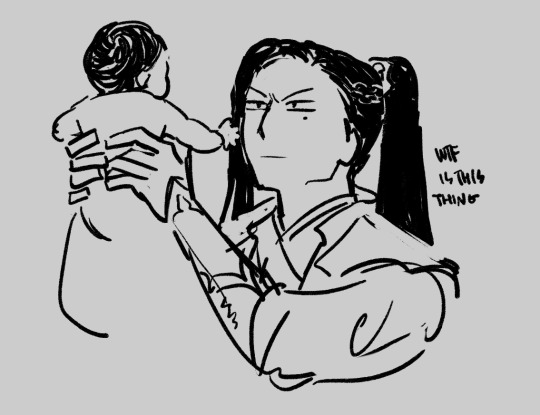

[ID: Scum Villain sketches of Liu Qingge with a baby. In the first he's holding it on his hip. The baby is chewing on a fan, covering it in spit. Off screen, Shen Qingqiu asks, "Umm... Liu-shidi, what do you have there?" Nonplussed, Liu Qingge replies, "Your fan." Second image is Liu Qingge holding the baby up and squinting at it intently, thinking, "WTF is this thing." In the last drawing he's standing and holding the sleeping baby with one hand, its legs sprawled on his arm and his hand holding its belly. The baby's head is not supported. He frowns down at it in confusion and thinks, "How the fuck do I hold this thing..." /end ID]
these were all drawn before the fic was written so they're not really related to the established baby continuity but anyway. guy who is figuring this 'baby' thing out and is even doing an okay job
#liu qingge#lqg tag#svsss#scum villain's self saving system#nik art#spring in bloom#THE BABY!!!!!! last drawing is my fave :)#please ignore how all three of these look like they were made by different people lmao
154 notes
·
View notes
Text
I still don't understand how the entirety of Will's crush on Mike was told solely in looks and little moments throughout S3...




...and people still find the gall to say that the same exact thing happening with Mike the very next season doesn't mean anything.






Like?! You already learned and had confirmed that the little looks and glances mean a ton...because they were what were used to tell the story of Will's feelings. That is literally confirmed. Will has canonical romantic feelings for Mike Wheeler.
And yet. Mike. Giving the exact same looks Will did for two entire seasons...somehow means something different for him? Your argument is that for Will those exact looks were romantic..but for Mike they're platonic just because *checks notes* he said he loved someone else (the same way his actual blood sister Nancy did to Steve...one episode before they broke up)?
...be so mf serious right now
#byler#mike wheeler#will byers#its literally WILLFUL IGNORANCE TO STRANGER THINGS to say Mike can't have romantic feelings for will atp#like byler doubt as a concept should have been launched out the door the second Noah confirmed Will's feelings were romantic for Mike#BECAUSE MIKE IS DOING THE EXACT SAME THING.#those looks are how the duffers tell the story. that is CANON CONFIRMED FACT.#its not even a JUMP to say the same thing happening to another character means the same thing. Its how stories are told.#LIKE>!!?!RO:FJGVAR FUCKING PLEASE BE SERIOUS#i can't do this anymore lmao the arguments are for WHO at this point#we all know whats happening lmaooo#my st commentary#stranger things#the me tag
458 notes
·
View notes
Text
Would you guys still love me if I posted JSE content



WHEN I LOOK AT YOU, I SEE THE STORY IN YOUR EYES
#IGNORE HOW JACKIE LOOKS FUCKED UP#I DON'T KNOW WHAT'S WRONG WITH HIM#PLEASE EXCUSE MY IMPUDENCE#i need that comic so bad#art#fanart#traditional art#jay draws#JSE#Jacksepticeye#jacksepticegos#marvin the magnificent#jackie-boy man#ermmm im not used to tagging for this fandom lmao#B.E.R. inspired#The Night Begins to Shine Inspired#Song inspired#B.E.R. The Night Begins to Shine
58 notes
·
View notes
Text




Shoutout to the curly hair alastor enjoyers out there this one is for you 🗣️🗣️‼️‼️‼️‼️
#hazbin alastor#hazbin hotel#hazbin hotel alastor#alastor#hazbin hotel alastor fanart#hazbin hotel fanart#alastor fanart#ignore my deranged comments that I make on my own art please LMAOO#let me be silly in peace pls#sane tag rambling incoming ‼️#I feel extremely normal about him#(lying)#personally curly hair alastor changed my life#so if you haven’t had the lovely experience of seeing yet please enjoy#anyways the longer I draw the silly murder deer#the more artistic liberties I find myself taking LMAO#this idiot has burrowed his way into my mind#and I don’t think he is choosing the leave anytime soon#so more art will probably come#so there goes my artblock ig#curly hair alastor….#save me#save me curly hair alastor
30 notes
·
View notes
Text











Every year I draw my girlfriend fiancée and I + make a Spotify playlist for her!
This year we bought a new house together; we basically lived in our comfiest clothes while we unpacked our many (many) boxes of books. Allie turned 30 and we found 30 local bookstores in our new town to celebrate and finally reached our goal of owning 1000 books! What a year!
#lesbian#lesbian positivity#butch/femme#butch positivity#butch#femme#queer positivity#why is tagging original art SO FUCKING EMBARASSING LMAO#please reblog and fucking ignore my attempts to get people to find this art post#lesbian pride#butch lesbian#femme lesbian#queer#butch femme#femme4butch#lesbians#lesbian day of visibility#self portrait#sapphic love#girlfriends#lesbian visibility day
22 notes
·
View notes
Photo




⮑ 𝙏𝙀𝘼𝙈 𝙕 𝙌𝙐𝘼𝙍𝙏𝙀𝙏 —
#THIS ONE'S BEEN FOSSILIZING IN MY DRAFT#blue lock#bllk#isagi yoichi#bachira meguru#kunigami rensuke#chigiri hyouma#team z quartet#bluelockedit#:m#e:gifs#e:gfx#this was made on a whim and i didnt save the psd so please just ignore the weird things#my kids...#can i get their reunion? as a treat?#can i have them hanging out outside of match? as a treat???#oh also i dont know football im just copying shit from the wiki lmao#(tags made before latest development also LMAO GOD WEEE im so winning)#blue lock spoilers#blue lock manga spoilers#for previous tag
141 notes
·
View notes
Text


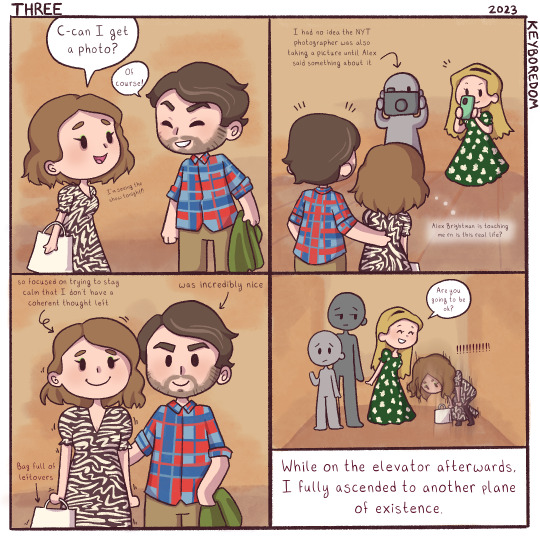
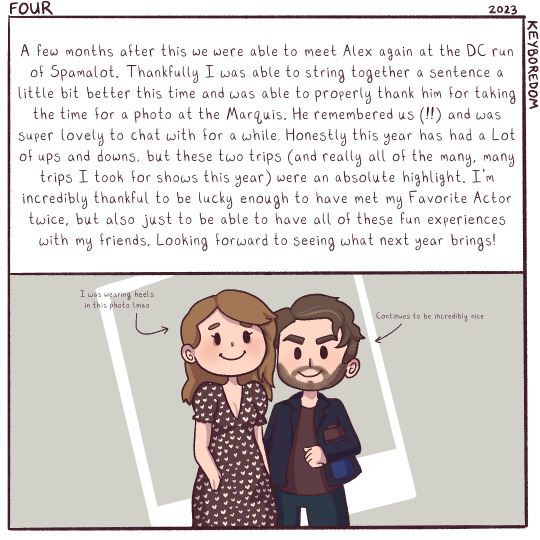
Instead of writing out a whole retrospective post this year, I thought I’d just make a quick comic about the single most wild experience that was meeting my favorite actor.
(I did end up contacting the NYT to get the photo they took by the way)
#alex brightman#feels wrong putting this in the tag but if anyone will appreciate this story it’s people on tumblr#at any rate I don’t normally draw fanart of people not in character so please enjoy a tiny alex or two#many other cool and not so cool things happened to me this year#but this was definitely the highlight#also lmao please ignore that I very obviously made the first page separately from the rest#I was going to go for a sketchy look but realized it took just as much time so I didn’t continue it for the other pages#and tbh I wasn’t about to make an effort on this
44 notes
·
View notes
Text
simon w cats!! (≧▽≦)


#cry of fear#simon henriksson#lol#istg im gonna scream#uhhh#:3#yippee#yells into the void#please ignore#the tags#lmao
50 notes
·
View notes
Text






Part 4! *checks notes* maybe one more to go before the fun stuff starts happening! we see Peter next update :3
part 1, part 2, part 3, next
#crowcraft#please please please ignore the last background it’s meant to be a house#but I gave uppppp#I hope this thing reads well lmao bc I have no idea what I’m doing#ok actual tags time#atsv#atsv gwen#across the spiderverse#gwen stacy#messy gwen comic#comic#itsv#spiderwoman#ghost spider#spiderman#spider gwen#spiderverse#gonna be a quality drop soon bc it’s not hitting the messiness I want it to#this is supposed to be low effort
80 notes
·
View notes
Text



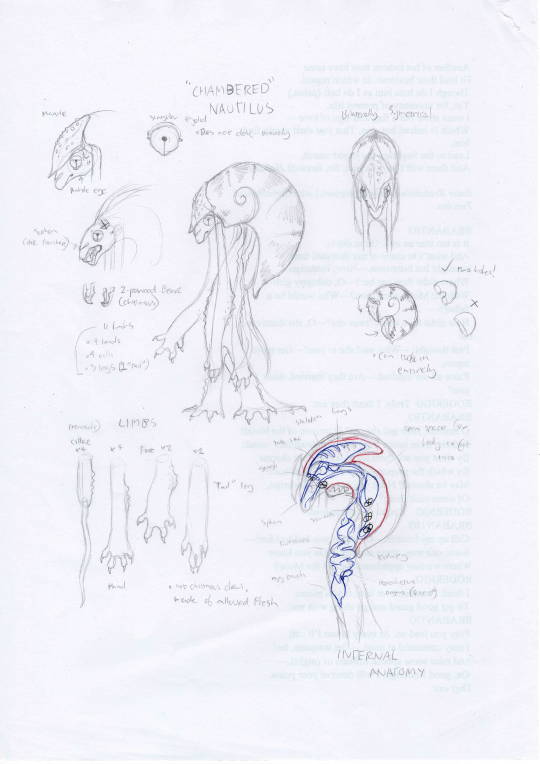
Sketchdump of speculative biology notes i’ve made recently for the children’s cartoon squid game.
You can read the alt descriptions if you wanna know the fish lore pspspspspsps
#There’s a reason why i rarely share sketches#It’s because they suck LMAO at least in comparison to a finished piece they are horrendous in a quality-comparison#My art#sketch dump#sketch#speculative biology#speculative zoology#spec bio#splatoon#xeno tag#xeno inkling#Also my handwriting sucks so bad I had to type over it please ignore the typos it is late at night#sea urchin#sea slug#anatomy
78 notes
·
View notes
Text
How tall is team Canada?
From Emma maltais tik tok
#please excuse my shoddy screen recording#finally some happy content#also not me playing along because I Wikipedia people too much#ignore that#hockey Canada#canwnt#I’m sorry I’m not tagging individuals#it’s too much work and overly specific but iykyk#plus I would end up tagging 5 people you know who they are#also some questionable research methods here#on top of just the tik tok filter being inconsistent#honestly I don’t buy that mpp actually thinks she’s 5’9 bc then how tall does she think Stacey is lmao
12 notes
·
View notes
Text
🫧*₊“𝐄𝐭𝐞𝐫𝐧𝐚𝐥 𝐋𝐨𝐯𝐞 𝐚𝐧𝐝 𝐆𝐨𝐨𝐝𝐛𝐲𝐞𝐬”

a/n: 1 more hour before i have to miss my wife for a whole week ;;

The burden of immortality is a heavy one. The fact that one has to outlive the majority of the population, their offspring, and the countless generations afterward; it’s a weight too heavy to bear for Furina. It raises the daunting question of whether an immortal should be able to love a mortal at all.
And yet, here she is. Her hand in your much more fragile one, her heart racing as she drags you across one of her most cherished pastry shops in Fontaine.
Furina always felt the need to drown those deep dark thoughts with her usual extravaganza. Anything to distract herself and keep her from remembering the prophecy. That, and the fact that it makes you smile more often. The childish joy in your eyes is perhaps the reason why she has made such a fuss over those new macaroons this morning.
And no matter how many times you’re bound to repeat the cycle, in any era, with any version of you; you’ll return to save her. Even when you don’t always know it.
If she is fated to be alone, to witness all the citizens of her nation dissolve, she'll be selfish and defy Celestia for once. The hydro symbol between your shoulder blades is Furina’s silent promise and love letter to you.
Fated to dance around the strings of fate forever, too afraid to search you herself, she’ll patiently await your return as she always does.
For you and her are destined to be together.

© intothegenshinworld. This content above is made for the genshinblr ebg of October 2023, hosted by i23kazu! Because of this, content like these will contain selfship lore. After the ebg, the blog will return to its usual content!
#Shiro!EBG 10.23#omg soulmate au?????#🌟Shiro selfships; ShiRina#Furina#Focalors#selfship#I am still sick#so please ignore any weird structured sentences and such#anyways idk how to tag this#this is more for me anyways LMAO
48 notes
·
View notes
Text
hiki and geki matching post



hiki and geki matching post
#utau#kazehiki utau#gekiyaku utau#(this isn't all of them but these are the ones i thought matched the most esp given the poses; these r the 偽薬; 点滴; and 顆粒 vbs respectively)#(also i hope this doesnt go against kuzutokaze's terms?? cause its just low quality screencaps and not the full high res art)#(but ill delete if i have to)#theyre sillyyyy i like them BOTH when u have vsynths that are meant to b counterparts do not separate them!!!#angst siblings angst siblings... (to me.) maybe im particularly based b/c reminds me of my own brother and i#but also ive just read interpretations/fantheories abt these two that have absolutely DESTROYEDDD me sad as fuck man wtf 😭😭#i have a lot of thoughts abt a lot of vsynths. ughhhh curse me not having a lot of time to draw rn#i will admit i was a bit more hiki based at first lmao but ive warmed up to geki; yeah her voice tone def isnt for everyone#i totally get that. but she can roll her rs so good LMAOO... and also just in the way/s i interpret her she reminds me a lot of myself :(#[well ok i project heavilyyy on a lot of my vsynth interpretations but these two. i can do things. *hits them w/ my latine beam*]#[JOKINGG... /hj. in a way. shhhhhhhh dont even worry about it. i NEEED to test out more how they both sound in spanish tho i need]#please ignore these tags for the love of god 😭😭😭 its late and im going a little unhinged
37 notes
·
View notes
Text

your honor i love him,,,
#please ignore my typo lmao#my art#ok to tag as kin#slight body horror#dhmis#dhmis red guy#red guy#red guy dhmis#dont hug me im scared#dont hug me im scared show#dhmis spoilers#dhmis fanart#dhmis fandom#teeth#eye strain
183 notes
·
View notes
Text
woe. bruce and dinah friendship be upon ye:

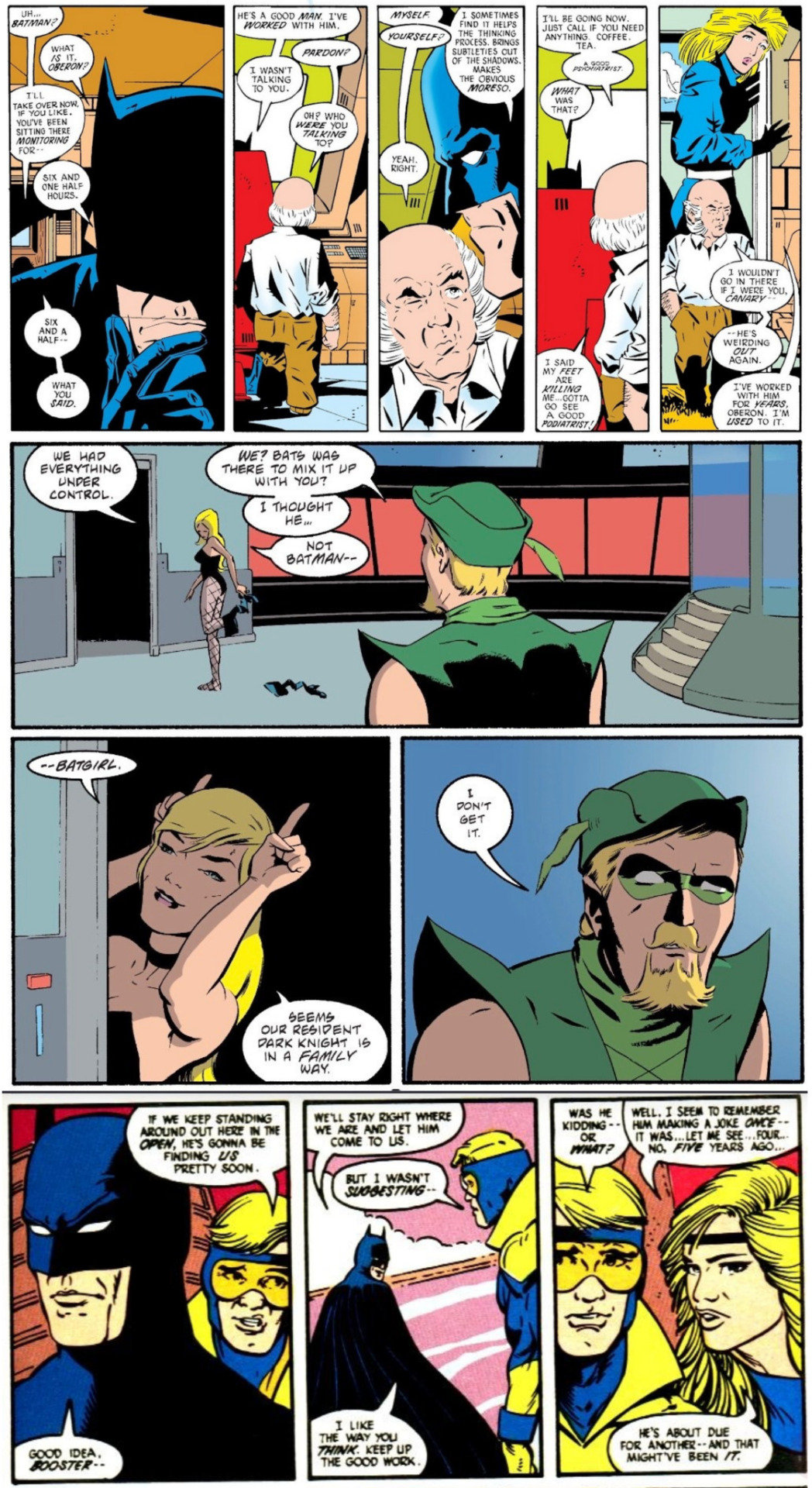

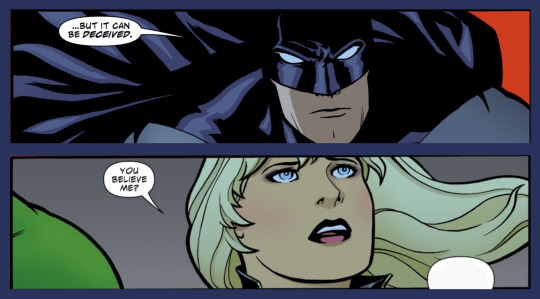



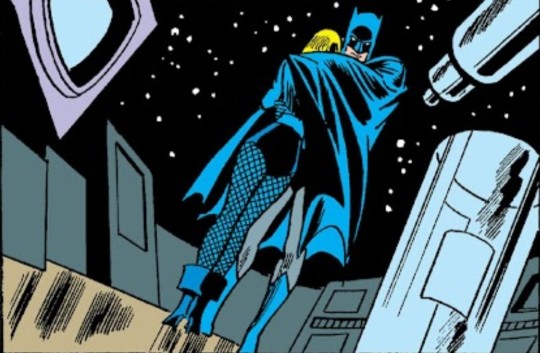
"Someone has to have our backs. Keep us honest. That's why I'm here." / "Batman needs a conscience? Okay, I'll bite."
{ The Brave and the Bold (1980) #166 • JLI (1987) #13 • Batgirl Year One (2003) #7 • JLI (1987) #6 • JLI (1987) #7 • JLA: Incarnations (2001) #4 • Green Arrow/Black Canary (2007) #1 • Injustice 2 (2017) #4 • JLI (1987) #13 • JLI (1987) #11 • Justice League of America (1960) #84 • Justice League of America: Rebirth (2017) }
#bruce wayne#dinah lance#black canary#batman#gather around children and let me tell you a story about a young girl fresh to the world of comics who watched season 2 episode 5#of batman the brave and the bold and became deeply invested in the relationship of bruce wayne and dinah lance as fellow proteges of the jsa#and fairly young orphans with a close if not slightly competitive relationship built on mutual trust and admiration of one another#and understanding of their respective histories#only to read more comics and learn that that's not really a thing they have. anywhere. apparently. head in hands.#anyway if anyone knows more comics where they interact please let me know. i know they team up in shadow of the bat (which i would have#included but i found out about only after i'd finished arranging my photos) and met once or twice in bop if my memory serves. and 2006 jla#see at least the bruce and zatanna childhood friend truthers have paul dini in their corner. what do i have? brief interactions cobbled#together from dozens of comics strewn across the years each with very different vibes for their dynamic. wjdhjkh#i think of them as a mix of the bruce and zee and the bruce and babs dynamics. ga/bc came closest i think. it may not have been about them#but it was TO ME.#you know the zee and dee mini series? that's what i wanted for them#oh yeah feel free to tag as ship lmao. they literally make out after one of these panels im just choosing to ignore it <3
7 notes
·
View notes
Text
Queen Margaret (of Anjou) had written to the Common Council in November when the news of the Duke of York's coup was proclaimed. The letter from the queen was published in modernised English by M.A.E. Wood in 1846, and she dated it to February 1461 because of its opening sentence: ‘And whereas the late Duke of N [York]...." However the rest of the letter, and that of the prince, is in the present tense and clearly indicates that the Duke of York is still alive. The reference to the ‘late duke’ is not to his demise but to the attainder of 1459 when he was stripped of his titles as well as of his lands. If the queen’s letter dates to November 1460, and not February 1461, it make perfect sense. Margaret declared the Duke of York had ‘upon an untrue pretense, feigned a title to my lord’s crown’ and in so doing had broken his oath of fealty. She thanked the Londoners for their loyalty in rejecting his claim. She knew of the rumours,
that we and my lords sayd sone and owrs shuld newly drawe toward yow with an vnsome [uncounted] powere of strangars, disposed to robbe and to dispoyle yow of yowr goods and havours, we will that ye knowe for certeyne that . . . . [y]e, nor none of yow, shalbe robbed, dispoyled nor wronged by any parson that at that tyme we or owr sayd sone shalbe accompanied with
She entrusted the king's person to the care of the citizens ‘so that thrwghe malice of his sayde enemye he be no more trowbled vexed ne jeoparded.’ In other words the queen was well informed in November 1460 of the propaganda in London concerning the threat posed by a Lancastrian military challenge to the illegal Yorkist proceedings. Margaret assured the Common Council that no harm would come to the citizenry or to their property. Because the letter was initially misdated, it has been assumed that the queen wrote it after she realised the harm her marauding troops were doing to her cause, and to lull London into a false sense of security. This is not the case, and it is a typical example of historians accepting without question Margaret’s character as depicted in Yorkist propaganda. Margaret’s letter was a true statement of her intentions but it made no impact at the time and has made none since. How many people heard of it? The Yorkist council under the Earl of Warwick, in collusion with the Common Council of the city, was in an ideal position to suppress any wide dissemination of the letter, or of its content.
... When Margaret joined the Lancastrian lords it is unlikely that she had Scottish troops with her. It is possible that Jasper Tudor, Earl of Pembroke, sent men from Wales but there was no compelling reason why he should, he needed all the forces at his disposal to face Edward Earl of March, now Duke of York following his father’s death at Wakefield, who, in fact, defeated Pembroke at Mortimer’s Cross on 2 February just as the Lancastrian army was marching south. The oft repeated statement that the Lancastrian army was composed of a motley array of Scots, Welsh, other foreigners (French by implication, for it had not been forgotten that René of Anjou, Queen Margaret’s father, had served with the French forces in Nomandy when the English were expelled from the duchy, nor that King Charles VII was her uncle) as well as northern men is based on a single chronicle, the Brief Notes written mainly in Latin in the monastery of Ely, and ending in 1470. It is a compilation of gossip and rumour, some of it wildly inaccurate, but including information not found in any other contemporary source, which accounts for the credence accorded to it. The Dukes of Somerset and Exeter and the Earl of Devon brought men from the south and west. The Earl of Northumberland was not solely reliant on his northern estates; as Lord Poynings he had extensive holdings in the south. The northerners were tenants and retainers of Northumberland, Clifford, Dacre, the Westmorland Nevilles, and Fitzhugh, and accustomed to the discipline of border defence. The continuator of Gregory’s Chronicle, probably our best witness, is emphatic that the second battle of St Albans was won by the ‘howseholde men and feyd men.” Camp followers and auxiliaries of undesirables there undoubtedly were, as there are on the fringes of any army, but the motley rabble the queen is supposed to have loosed on peaceful England owes more to the imagination of Yorkist propagandists than to the actual composition of the Lancastrian army.
... Two differing accounts of the Lancastrian march on London are generally accepted. One is that a large army, moving down the Great North Road, was made up of such disparate and unruly elements that the queen and her commanders were powerless to control it.” Alternatively, Queen Margaret did not wish to curb her army, but encouraged it to ravage all lands south of the Trent, either from sheet spite or because it was the only way she could pay her troops.” Many epithets have been applied to the queen, few of them complimentary, but no one has as yet called her stupid. It would have been an act of crass stupidity wilfully to encourage her forces to loot the very land she was trying to restore to an acceptance of Lancastrian rule, with her son as heir to the throne. On reaching St Albans, so the story goes, the Lancastrian army suddenly became a disciplined force which, by a series of complicated manoeuvres, including a night march and a flank attack, won the second battle of St Albans, even though the Yorkists were commanded by the redoubtable Earl of Warwick. The explanation offered is that the rabble element, loaded down with plunder, had descended before the battle and only the household men remained. Then the rabble reappeared, and London was threatened. To avert a sack of the city the queen decided to withdraw the army, either on her own initiative or urged by the peace-loving King Henry; as it departed it pillaged the Abbey of St Albans, with the king and queen in residence, and retired north, plundering as it went. Nevertheless, it was sufficiently intact a month later to meet and nearly defeat the Yorkist forces at Towton, the bloodiest and hardest fought battle of the civil war thus far. The ‘facts’ as stated make little sense, because they are seen through the distorting glass of Yorkist propaganda.
The ravages allegedly committed by the Lancastrian army are extensively documented in the chronicles, written after the event and under a Yorkist king. They are strong on rhetoric but short on detail. The two accounts most often quoted are by the Croyland Chronicle and Abbott Whethamstede. There is no doubting the note of genuine hysterical fear in both. The inhabitants of the abbey of Crowland were thoroughly frightened by what they believed would happen as the Lancastrians swept south. ‘What do you suppose must have been our fears . . . [w]hen every day rumours of this sad nature were reaching our ears.’ Especially alarming was the threat to church property. The northern men ‘irreverently rushed, in their unbridled and frantic rage into churches . . . [a]nd most nefariously plundered them.’ If anyone resisted ‘they cruelly slaughtered them in the very churches or churchyards.’ People sought shelter for themselves and their goods in the abbey,“ but there is not a single report of refugees seeking succour in the wake of the passage of the army after their homes had been burned and their possessions stolen. The Lancastrians were looting, according to the Crowland Chronicle, on a front thirty miles wide ‘like so many locusts.“ Why, then, did they come within six miles but bypass Crowland? The account as a whole makes it obvious that it was written considerably later than the events it so graphically describes.
The claim that Stamford was subject to a sack from which it did not recover is based on the Tudor antiquary John Leland. His attribution of the damage is speculation; by the time he wrote stories of Lancastrian ravages were well established, but outside living memory. His statement was embellished by the romantic historian Francis Peck in the early eighteenth century. Peck gives a spirited account of Wakefield and the Lancastrian march, influenced by Tudor as well as Yorkist historiography.
… As late as 12 February when Warwick moved his troops to St Albans it is claimed that he did not know the whereabouts of the Lancastrians, an odd lack of military intelligence about an army that was supposed to be leaving havoc in its wake. The Lancastrians apparently swerved to the west after passing Royston which has puzzled military historians because they accept that it came down the Great North Road, but on the evidence we have it is impossible to affirm this. If it came from York via Grantham, Leicester, Market Harborough, Northampton and Stony Stratford to Dunstable, where the first engagement took place, there was no necessity to make an inexplicable swerve westwards because its line of march brought it to Dunstable and then to St Albans. The Lancastrians defeated Warwick’s army on 17 February 1461 and Warwick fled the field. In an echo of Wakefield there is a suggestion of treachery. An English Chronicle tells the story of one Thomas Lovelace, a captain of Kent in the Yorkist ranks, who also appears in Waurin. Lovelace, it is claimed, was captured at Wakefield and promised Queen Margaret that he would join Warwick and then betray and desert him, in return for his freedom.
Lt. Colonel Bume, in a rare spirit of chivalry, credits Margaret with the tactical plan that won the victory, although only because it was so unorthodox that it must have been devised by a woman. But there is no evidence that Margaret had any military flair, let alone experience. A more likely candidate is the veteran captain Andrew Trolloppe who served with Warwick when the latter was Captain of Calais, but he refused to fight under the Yorkist banner against his king at Ludford in 1459 when Warwick brought over a contingent of Calais men to defy King Henry in the field. It was Trolloppe’s ‘desertion’ at Ludford, it is claimed, that forced the Yorkists to flee. The most objective and detailed account of the battle of St Albans is by the unknown continuator of Gregory’s Chronicle. The chronicle ends in 1469 and by that time it was safe to criticise Warwick, who was then out of favour. The continuator was a London citizen who may have fought in the Yorkist ranks. He had an interest in military matters and recorded the gathering of the Lancastrian army at Hull, before Wakefield, and the detail that the troops wore the Prince of Wales’ colours and ostrich feathers on their livery together with the insignia of their lords. He had heard the rumours of a large ill-disciplined army, but because he saw only the household men he concluded that the northerners ran away before the battle. Abbot Whethamstede wrote a longer though far less circumstantial account, in which he carefully made no mention of the Earl of Warwick.
… Margaret of Anjou had won the battle but she proceeded to lose the war. London lay open to her and she made a fatal political blunder in retreating from St Albans instead of taking possession of the capital.' Although mistaken, her reasons for doing so were cogent. The focus of contemporary accounts is the threat to London from the Lancastrian army. This is repeated in all the standard histories, and even those who credit Margaret with deliberately turning away from London do so for the wrong reasons.
... The uncertainties and delays, as well as the hostility of some citizens, served to reinforce Margaret’s belief that entry to London could be dangerous. It was not what London had to fear from her but what she had to fear from London that made her hesitate. Had she made a show of riding in state into the city with her husband and son in a colourful procession she might have accomplished a Lancastrian restoration, but Margaret had never courted popularity with the Londoners, as Warwick had, and she had kept the court away from the capital for several years in the late 1450s, a move that was naturally resented. Warwick’s propaganda had tarnished her image, associating her irrevocably with the dreaded northern men. There was also the danger that if Warwick and Edward of March reached London with a substantial force she could be trapped inside a hostile city, and she cannot have doubted that once she and Prince Edward were taken prisoner the Lancastrian dynasty would come to an end. Understandably, at the critical moment, Margaret lost her nerve.
... Queen Margaret did not march south in 1461 in order to take possession of London, but to recover the person of the king. She underestimated the importance of the capital to her cause." Although she had attempted to establish the court away from London, the Yorkist lords did not oppose her for taking the government out of the capital, but for excluding them from participation in it. Nevertheless London became the natural and lucrative base for the Yorkists, of which they took full advantage. The author of the Annales was in no doubt that it was Margaret’s failure to enter London that ensured the doom of the Lancastrian dynasty. A view shared, of course, by the continuator of Gregory’s Chronicle, a devoted Londoner:
He that had Londyn for sake
Wolde no more to hem take
The king, queen and prince had been in residence at the Abbey of St Albans since the Lancastrian victory. Abbot Whethamstede, at his most obscure, conveys a strong impression that St Albans was devastated because the Lancastrian leaders, including Queen Margaret, encouraged plundering south of the Trent in lieu of wages. There must have been some pillaging by an army which had been kept in a state of uncertainty for a week, but whether it was as widespread or as devastating as the good abbot, and later chroniclers, assert is by no means certain. Whethamstede is so admirably obtuse that his rhetoric confuses both the chronology and the facts. So convoluted and uncircumstantial is his account that the eighteenth century historian of the abbey, the Reverend Peter Newcome, was trapped into saying: ‘These followers of the Earl of March were looked on as monsters in barbarity.’ He is echoed by Antonia Gransden who has ‘the conflict between the southemers of Henry’s army and the nonherners of Edward’s. The abbey was not pillaged, but Whethamstede blackened Queen Margaret’s reputation by a vague accusation that she appropriated one of the abbey’s valuable possessions before leaving for the north. This is quite likely, not in a spirit of plunder or avarice, but as a contribution to the Lancastrian war effort, just as she had extorted, or so he later claimed, a loan from the prior of Durham earlier in the year. The majority of the chroniclers content themselves with the laconic statement that the queen and her army withdrew to the north, they are more concerned to record in rapturous detail the reception of Edward IV by ‘his’ people. An English Chronicle, hostile to the last, reports that the Lancastrian army plundered its way north as remorselessly as it had on its journey south. One can only assume that it took a different route.
The Lancastrian march ended where it began, in the city of York. Edward of March had himself proclaimed King Edward IV in the capital the queen had abandoned, and advanced north to win the battle of Towton on 29 March. The bid to unseat the government of the Yorkist lords had failed, and that failure brought a new dynasty into being. The Duke of York was dead, but his son was King of England whilst King Henry, Queen Margaret and Prince Edward sought shelter at the Scottish court. The Lancastrian march on London had vindicated its stated purpose, to recover the person of the king so that the crown would not continue to be a pawn in the hands of rebels and traitors, but ultimately it had failed because the Lancastrian leaders, including Queen Margaret, simply did not envisage that Edward of March would have the courage or the capacity to declare himself king. Edward IV had all the attributes that King Henry (and Queen Margaret) lacked: he was young, ruthless, charming, and the best general of his day; and in the end he out-thought as well as out-manoeuvred them.
It cannot be argued that no damage was done by the Lancastrian army. It was mid-winter, when supplies of any kind would have been short, so pillaging, petty theft, and unpaid foraging were inevitable. It kept the field for over a month and, and, as it stayed longest at Dunstable and in the environs of St Albans, both towns suffered from its presence. But the army did not indulge in systematic devastation of the countryside, either on its own account or at the behest of the queen. Nor did it contain contingents of England’s enemies, the Scots and the French, as claimed by Yorkist propaganda. Other armies were on the march that winter: a large Yorkist force moved from London to Towton and back again. There are no records of damage done by it, but equally, it cannot be claimed that there was none.
-B.M Cron, "Margaret of Anjou and the Lancastrian March on London, 1461"
#*The best propaganda narratives always contain an element of truth but it's important to remember that it's never the WHOLE truth#margaret of anjou#15th century#english history#my post#(please ignore my rambling tags below lmao)#imo the bottom line is: they were fighting a war and war is a scourge that is inevitably complicated and messy and unfortunate#arguing that NOTHING happened (on either side but especially the Lancastrians considering they were cut off from London's supplies)#is not a sustainable claim. However: Yorkist propaganda was blatantly propaganda and I wish that it's recognized more than it currently is#also I had *no idea* that her letter seems to have been actually written in 1460! I wish that was discussed more#& I wish Cron's speculation that Margaret may have feared being trapped in a hostile city with an approaching army was discussed more too#tho I don't 100% agree with article's concluding paragraph. 'Edward IV did not ultimately save England from further civil war' he...did???#the Yorkist-Lancastrian civil war that began in the 1450s ended in 1471 and his 12-year reign after that was by and large peaceful#(tho Cron may he talking about the period in between 61-71? but the civil war was still ongoing; the Lancasters were still at large#and the opposing king and prince were still alive. Edward by himself can hardly be blamed for the civil war continuing lol)#but in any case after 1471 the war WAS believed to have ended for good and he WAS believed to have established a new dynasty#the conflict of 1483 was really not connected to the events of the 1450s-1471. it was an entirely new thing altogether#obviously he shouldn't be viewed as the grand undoubted rightful savior of England the way Yorkist propaganda sought to portray him#(and this goes for ALL other monarchs in English history and history in general) but I don't want to diminish his achievements either#However I definitely agree that the prevalent idea that the Lancasters wouldn't have been able to restore royal authority if they'd won#is very strange. its an alternate future that we can't possibly know the answer to so it's frustrating that people seem to assume the worst#I guess the reasons are probably 1) the Lancasters ultimately lost and it's the winners who write history#(the Ricardians are somehow the exception but they're evidently interested in romantic revisionism rather than actual history so 🤷🏻♀️)#and 2) their complicated former reign even before 1454. Ig put together I can see where the skepticism comes from tho I don't really agree#but then again the Yorkists themselves played a huge role in the chaos of the 1450s. if a faction like that was finally out of the way#(which they WOULD be if the Lancasters won in 1461) the Lancastrian dynasty would have been firmly restored and#Henry and Margaret would've probably had more space and time to restore royal authority without direct rival challenges#I'd argue that the Lancasters stood a significantly better chance at restoring & securing their dynasty if they won here rather than 1471#also once again: the analyses written on Margaret's queenship; her role in the WotR; and the propaganda against her are all phenomenal#and far far superior than the analyses on any other historical woman of that time - so props to her absolutely fantastic historians
19 notes
·
View notes